|













| |
Search
and compare the lowest prices on the web!
Everything from snowmobiles &
camping gear to designer handbags, laptops & leather furniture!
Click
here | | |
Donate your
used car, boat, motorcycle, van or RV to your favorite charity & receive full
fair market value as a tax deduction!
Click
here to learn more and search for your favorite charity!
Free
nationwide pickup and
no complicated paperwork.
It's fast and easy. All
vehicles accepted. |
|
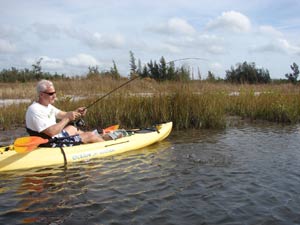 Tampa
is Florida's third most
populous city
with 300,000 people and over 24 square miles of inland waterways. Tampa
lies on Florida's largest inlet, Tampa Bay which separates it from its sister
city of St. Petersburg. Tampa
is Florida's third most
populous city
with 300,000 people and over 24 square miles of inland waterways. Tampa
lies on Florida's largest inlet, Tampa Bay which separates it from its sister
city of St. Petersburg.
The beautiful clear flats of Tampa
Bay are studded with abundant mangrove shorelines. The West Coast of Florida has
some of the finest Backcountry fishing in the world! Hard fighting game fish occupy
the bay - Snook, Tarpon, Pompano, Redfish, Trout, and Permit. The summer months
are prime Tarpon fishing in Tampa Bay, as the Tarpon move up the west coast from
world famous Boca Grande.
Tampa
Bay Facts:
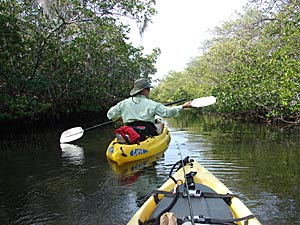 Tampa
Bay is the largest open-water estuary in Florida, encompassing
nearly 400 square miles and bordering three counties -- Hillsborough,
Manatee and Pinellas. Tampa
Bay is the largest open-water estuary in Florida, encompassing
nearly 400 square miles and bordering three counties -- Hillsborough,
Manatee and Pinellas.
- More than 100 tributaries
flow into Tampa Bay, including dozens of meandering, brackish-water
creeks and four major rivers -- the Hillsborough, Alafia, Manatee
and Little Manatee.
- More than 200 species
of fish are found in Tampa Bay, including snook, redfish and spotted
sea trout.
- Tampa Bays's Mangrove
islands are nesting areas for all sorts of waterbirds - from the
white ibis, great blue heronto
 rare
species of migrating birds and waders. rare
species of migrating birds and waders.
- On average, Tampa
Bay is only 12 feet deep.
- The Port of Tampa
is Florida's largest port and consistently ranks among the top
10 ports nationwide in trade activity. It contributes billions
annually to the region's economy.
The Sunshine State of Florida is a world class paradise for sports
anglers with 12,000
miles of rivers and streams, 1,200 miles of
coastline, almost 8,000 lakes and 2,200 marinas. Freshwater fishing
in Florida's canals, lakes, ponds and rivers yields a huge variety
of sport fish ranging from from largemouth bass, bluegill, crappie,
gar, to bottom dwelling catfish. Saltwater species include Permit,
Grouper and Tarpon.
 The
Gulf of Mexico is a major body of water bordered and nearly landlocked
by North America. The gulf's eastern, northern, and northwestern shores
lie within the United States of America. The gulf is bordered on the
southwestern and southern shores with Mexico. The
total area of the Gulf of Mexico is approximately 615,000 square miles.
Coastal cities along the Gulf of Mexico include Tampa, St. Petersburg,
Pensacola, Mobile, New Orleans, Beaumont, and Houston in the United
States,Veracruz and Mérida in Mexico, and Havana in Cuba. The
Gulf of Mexico is a major body of water bordered and nearly landlocked
by North America. The gulf's eastern, northern, and northwestern shores
lie within the United States of America. The gulf is bordered on the
southwestern and southern shores with Mexico. The
total area of the Gulf of Mexico is approximately 615,000 square miles.
Coastal cities along the Gulf of Mexico include Tampa, St. Petersburg,
Pensacola, Mobile, New Orleans, Beaumont, and Houston in the United
States,Veracruz and Mérida in Mexico, and Havana in Cuba.
The Gulf of Mexico is well known for its calm sea conditions and excellent
year round kayaking. The water is warm, the wildlife is varied and
abundant, and there are countless inlets and beaches to explore.
Slide
ShowsFishing
for Reds and Snook in the mangrove islands of Tampa Bayclick
here for slide show | Take
a virtual kayak trip through Robinson Preserve
click
here | 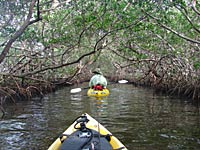 | 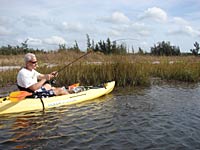 | 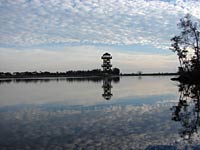 |
NEW
VIDEOS | | | SEVEN
POUND WINTER RED FISH CAUGHT FROM A KAYAK IN 10 INCHES OF WATER!
Take a virtual kayak trip with Rob Grant & Captain
Jim Elliot as they search for the elusive winter Red Fish on Tampa Bay. Experience
the excitement of a rod bending fight with a hefty 7 pound Red from a kayak in
only 12 inches of water!
click
here | WHY
THE JUMPING 'LADY FISH' IS CALLED THE "POOR MAN'S TARPON"! Watch
the acrobatic jumps of a 'Lady Fish' (the "poor man's tarpon") caught from a kayak
on the Manatee River in mid January!
click
here | KAYAKING
THE TAMPA BAY FLATS DURING EXTREME WINTER TIDAL FLOWS Experience
the tranquility of crystal clear waters flowing over the sand flats filmed from
a kayak durring the extreme winter tidal flows on Tampa Bay. This is heaven on
earth! click
here |
Choosing
and Buying a Kayak
There are three structural classifications
of kayaks:
1. Rigid (or hardshell) boats, made
up of either plastic,
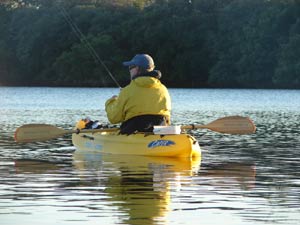 fiberglass,
kevlar, carbon fiber or wood fiberglass,
kevlar, carbon fiber or wood
2. Folding boats
3. Inflatable boats. The
rigid kayak is the type that most people think of when they think of a kayak.
Of the rigid models, a plastic boat will be the least expensive. It will also
be the heaviest. Plastic boats are usually tough and can take a lot of abuse,
but once damaged are difficult to repair. A
fiberglass boat will be more expensive than a plastic model, but will be significantly
lighter. Fiberglass may be easier to damage, but will also be easier to repair.
Composites
such as kevlar, graphite and carbon fiber kayaks will be even more expensive and
lighter still. Folding
boats have the advantage of easy portability and storage. A folding kayak is a
collapsable boat made of fabric stretched over either a wood or aluminum frame.
Their initial price is usually on the expensive end of the spectrum, but they
tend to last longer than a typical hardshell and their resale price usually remains
higher. Foldables
are remarkably tough, flexible, stable and seaworthy, but the general consensus
is that they lack a bit of the speed and performance of a hardshell. Inflatable
boats offer terrific portability and ease of storage.
They are usually the
least expensive kayaking option.
Kayaks are typically classified as to the type of boating they are
designed
to do. Boats built for long distance touring are radically
different from
boats built for whitewater activity. There isn’t any
single kayak that
will excel in every type of paddling situation. As a
kayak shopper, you need
to anticipate your future paddling
situations and then select a boat that
should perform well in those
situations.
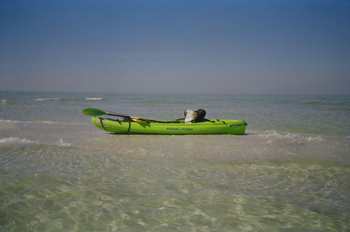 Types
of Kayaks Types
of Kayaks
Ocean- An ocean kayak is
a “sit-on” kayak where you actually are sitting on top of the kayak. These kayaks
are used mainly to paddle in the ocean, and are very buoyant because there is
no interior space for water to be collected as there is in an ocean and river
kayak. They handle waves very well, and are ideal for the ocean adventurous person.
Whitewater-A whitewater kayak is a small
kayak that is used for riding the rapids. The miniature kayak actually accelerates
through whitewater making rapids easier and fun. These kayaks are also used for
special tricks. Skilled professionals are able to actually pop in and out of the
water with the boats, as well as ride waterfalls. It is easy to maneuver, and
simple to flip this boat over, back above the water, if you should tip.
River-A river kayak is your typical kayak. These
kayaks are ideal for paddling on rivers, lakes, and ponds. Guided tours are often
run with river kayaks because they are the easiest to handle, and the most practical
for recreational kayaking.
Federal
Fishing Rules for the Gulf of Mexico
NEW GROUPER
AND TILEFISH REGULATIONS EFFECTIVE JULY 15, 2004
Recreational: Maximum
of 2 red grouper allowed within the 5-fish aggregate grouper bag limit 
Commercial: Shallow-water
grouper quota reduced from 9.35 mp gutted weight to 8.80 mp gutted wt.
New
red grouper quota - 5.31 mp gutted wt (counts as part of shallow-water grouper
quota)
Commercial shallow-water grouper fishery closes when either the shallow-water
grouper or red grouper quota is reached, whichever comes first.
Deep-water
grouper quota reduced from 1.35 mp gutted wt to 1.02 mp gutted wt.
New tilefish
quota - 0.44 mp gutted wt All
other grouper regulations remain the same, including the minimum size limits of
red
grouper - 20 inches total length
gag and black grouper - 22 inches total
length recreational, 24 inches total length commercial
yellowfin grouper
- 20 inches total length
scamp - 16 inches total length Commercial
closed season on red grouper, black grouper and gag - Feb. 15 to March 15
Virtual
Slideshows!
Take a
virtual tour of famous Florida landmarks and popular destinations throughout the
Sunshine State!
We invite you to enjoy our exclusive virtual slideshows and
stunning color photography of Florida's beautiful scenery. If you're visiting
us from the colder northern climates, sit back and enjoy the sun & surf !
Select
one of the virtual trips below to begin your adventure!
| | 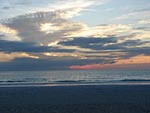 Beautiful
Sunset over the Beautiful
Sunset over the
Gulf of Mexico
click
here | 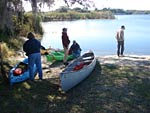
10
mile Kayak Trip down
the Braden River
click
here | | | |
FISHING
CHARTERS
& GUIDES |
|
|
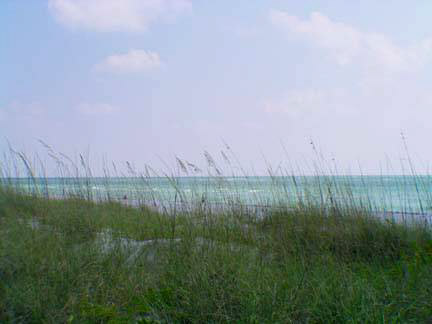 The
Gulf of Mexico Dead Zone The
Gulf of Mexico Dead Zone
A
huge "dead zone" of water so devoid of oxygen that sea life cannot live in it
has spread across 5,800 square miles of the Gulf of Mexico this summer in what
has become an annual occurrence caused by pollution. The dead zone lacks oxygen
because of pollution in the form of excess nutrients that flows into the gulf
from the Mississippi River. Animals trying to live in this smothering layer of
water near the bottom of the sea must either leave or they will sufficate. To
learn more about the "dead zone" please visit the National
Centers for Coastal Ocean Science Gulf of Mexico Hypoxia Assessment' s website.
NOAA's
Official Website
Gulf Of Mexico Facts & Information
-
Gulf
of Mexico Depth
At a depth of more than 12,000 feet, Sigsbee Deep is
the deepest part of the Golf of Mexico . It is more than 300 miles long and is
sometimes called the “Grand Canyon under the sea.” Its closest point
to the Texas coast is 200 miles southeast of Brownsville. -
Gulf
of Mexico Size
The total area of the Gulf of Mexico is about 600,000
square miles
-
Gulf
of Mexico Width
The shortest distance across the Gulf of Mexico is about
500 miles between the Mississippi Delta and the tip of the Yucatan Peninsula.
The greatest distance across the Gulf of Mexico is approximately 1,000 miles going
east to west.
-
Gulf
of Mexico Ports
The Gulf of Mexico links the ports of five southern U.S
states (Florida, Alabama, Mississippi, Louisiana, and Texas) and six Mexican states
(Tamaulipas, Vera Cruz, Tabasco, Campeche, Yucatán, and Quintana Roo) with
the Atlantic Ocean and Caribbean Sea.
-
Gulf
of Mexico Shoreline
The United States and Mexico form the Gulf of Mexico's
mainland shore, which extends more than 4,000 miles from the Florida Keys to Cabo
Catoche, at the northwestern tip of the Yucatán Peninsula in Mexico.
-
Gulf
of Mexico Sanctuaries
The Flower Garden Banks National Marine Sanctuary
contains the northernmost tropical coral reefs in the U.S.
Aransas National
Wildlife Refuge in Texas is the wintering ground of most of the world's whooping
cranes in the wild.
Padre Island National Seashore in Texas is the nation's
longest stretch of undeveloped beach.
Gulf
of Mexico facts:
At
a depth of more than 12,000 feet, Sigsbee Deep is the deepest part of the Golf
of Mexico . It is more than 300 miles long and is sometimes called the “Grand
Canyon under the sea.” Its closest point to the Texas coast is 200 miles
southeast of Brownsville.
Gulf of Mexico Size
The total area of
the Gulf of Mexico is about 600,000 square miles
Gulf of Mexico Width
The shortest distance across the Gulf of Mexico is about 500 miles between the
Mississippi Delta and the tip of the Yucatan Peninsula.
The greatest distance
across the Gulf of Mexico is approximately 1,000 miles going east to west.
Gulf of Mexico Ports
The Gulf of Mexico links the ports of five southern
U.S states (Florida, Alabama, Mississippi, Louisiana, and Texas) and six Mexican
states (Tamaulipas, Vera Cruz, Tabasco, Campeche, Yucatán, and Quintana
Roo) with the Atlantic Ocean and Caribbean Sea.
Gulf of Mexico Shoreline
The United States and Mexico form the Gulf of Mexico's mainland shore, which extends
more than 4,000 miles from the Florida Keys to Cabo Catoche, at the northwestern
tip of the Yucatán Peninsula in Mexico.
Gulf of Mexico Sanctuaries
The Flower Garden Banks National Marine Sanctuary contains the northernmost tropical
coral reefs in the U.S.
Aransas National Wildlife Refuge in Texas is the wintering
ground of most of the world's whooping cranes in the wild.
Padre Island National
Seashore in Texas is the nation's longest stretch of undeveloped beach.
|
FLORIDA VACATION RENTALS |
Great deals on vacation homes and condos!
Search by date, price, location.
Pictures & full descriptions!
Click
here | We
invite you to visit Anna Maria Island , Florida
Enjoy your visit on Anna Maria Island by relaxing on the pristine beaches or tour
the island's many historic sites by bicycle. Let our Anna Maria Island Guide help
you plan every aspect of your Florida vacation - from lodging & dining to
local island history and weather.
Anna Maria Island is a seven mile barrier
island located in the southern Gulf Coast area of Florida and is renowned for
its white sand gulf beaches and gin clear water. Anna Maria is the northernmost
of a string of barrier islands that extend in a southerly direction to the Florida
Keys.The Island itself is surrounded by the Gulf of Mexico to the west, Tampa
Bay to the north and Sarasota Bay and Anna Maria Bay on its eastern shores.
Fishing abounds on Anna Maria Island. The island offers three fishing piers: Anna
Maria City Pier, Rod & Reel Pier and Bradenton Beach.
White Beaches &
Glorious Sunsets
Anna Maria Island is a famous for its miles of white sandy
beaches with stunning sunsets over the Gulf of Mexico. Here visitors can find
world class angling, boating, surfing, golf, tennis as well as a rich selection
of exotic wildlife. In fact, the entire island of Anna Maria is considered a wildlife
sanctuary!
click
here for more information - Anna
Maria Fl
Mississippi
River.com
Visit Mississippi
River.com your premier website for information, maps, books, travel plans
and more covering the entire Mississippi River Region. From
Nautical Charts of the Mississippi River to thousands of real estate listings
. click here
Hurricane
Season
The
official hurricane season for the Atlantic Basin (the Atlantic Ocean, the Caribbean
Sea, and the Gulf of Mexico) is from June 1 to November 30. The peak of the season
is from mid-August to late October.
Hurricane Katrina
Gulf of Mexico Weather.com & Florida
Visitors Guides.com network announce the launch of a powerful disaster
relief network in the wake of Hurricane Katrina.
Gulf Coast Disaster
Relief.com &
New
Orleans Charity.org are designed to assist the victims of Hurricane Katrina, now
considered to be the single worst natural disaster in United States history.
All federal, state & private disaster relief organizations are listed on this network
& may be contacted directly or online.
Charity
Fund Raisers .org
Fundraising for Charity
Promote your cause and raise
more money. Extend, market and manage successful fund raising events!
See
how much you can raise for hurricane relief!
click
here |
|














 Tampa
is Florida's third most
populous city
with 300,000 people and over 24 square miles of inland waterways. Tampa
lies on Florida's largest inlet, Tampa Bay which separates it from its sister
city of St. Petersburg.
Tampa
is Florida's third most
populous city
with 300,000 people and over 24 square miles of inland waterways. Tampa
lies on Florida's largest inlet, Tampa Bay which separates it from its sister
city of St. Petersburg. Tampa
Bay is the largest open-water estuary in Florida, encompassing
nearly 400 square miles and bordering three counties -- Hillsborough,
Manatee and Pinellas.
Tampa
Bay is the largest open-water estuary in Florida, encompassing
nearly 400 square miles and bordering three counties -- Hillsborough,
Manatee and Pinellas. rare
species of migrating birds and waders.
rare
species of migrating birds and waders. The
Gulf of Mexico is a major body of water bordered and nearly landlocked
by North America. The gulf's eastern, northern, and northwestern shores
lie within the United States of America. The gulf is bordered on the
southwestern and southern shores with Mexico. The
total area of the Gulf of Mexico is approximately 615,000 square miles.
Coastal cities along the Gulf of Mexico include Tampa, St. Petersburg,
Pensacola, Mobile, New Orleans, Beaumont, and Houston in the United
States,Veracruz and Mérida in Mexico, and Havana in Cuba.
The
Gulf of Mexico is a major body of water bordered and nearly landlocked
by North America. The gulf's eastern, northern, and northwestern shores
lie within the United States of America. The gulf is bordered on the
southwestern and southern shores with Mexico. The
total area of the Gulf of Mexico is approximately 615,000 square miles.
Coastal cities along the Gulf of Mexico include Tampa, St. Petersburg,
Pensacola, Mobile, New Orleans, Beaumont, and Houston in the United
States,Veracruz and Mérida in Mexico, and Havana in Cuba.


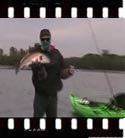
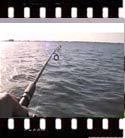
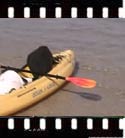
 fiberglass,
kevlar, carbon fiber or wood
fiberglass,
kevlar, carbon fiber or wood
 Types
of Kayaks
Types
of Kayaks 
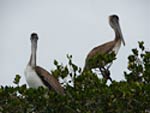


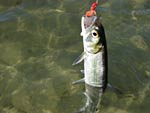
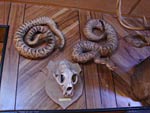
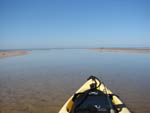
 The
Gulf of Mexico Dead Zone
The
Gulf of Mexico Dead Zone